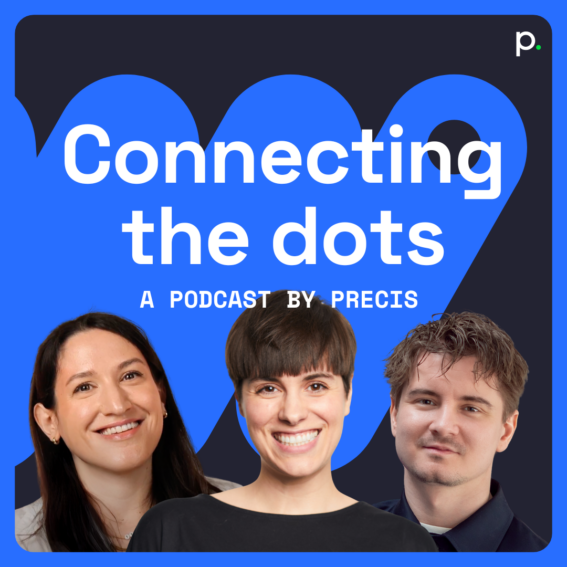Attention: Marketers’ new currency?

Sofia Borisova
Senior Media Strategist
The concept of attention in marketing and advertising is hardly novel—it’s a recurring theme that has woven its way through countless discussions over the years.
We all know how it goes: ads must capture our attention to work their magic… Unless, of course, you’re an aficionado of wild conspiracies like subliminal advertising—now, that’s a debate that might require something stronger than the cup of tea I’m currently sipping 🍵).
In this article, we’ll try to answer the million-dollar question: with all the advancements and shifts in how we consume media, can focusing on capturing attention really be the game-changer marketers are looking for?
To nuance our answer, we’ll briefly explore the importance of attention in the digital age, the challenges and the reliance on traditional metrics like viewability, the split focus between media and creative content and, finally, the potential of a unified approach to measuring attention.
1. Defining attention and viewability in advertising
Attention and viewability are our two key terms in this discussion. So to avoid any confusion, we’d like to start by stating what we understand by each term.
According to the Advertising Research Foundation (ARF), advertising attentiveness, or attention, is defined as “the degree to which those exposed to the advertising are focused on it – ranging from a very brief exposure (or ‘scan’) that is likely to leave very little memory trace, to intense focus with cognitive and emotional engagement that can lead to enduring recall and impact attitudes and behaviour – both positively and negatively.”
Similarly, according to the Media Rating Council, an ad is considered viewable when at least half of it is visible on the part of the webpage you’re looking at, and this visibility lasts for at least one continuous second.
Okay! So attention is a much more active exercise than viewability. Now that we’ve agreed on what we’re talking about, get your drink of choice ready and let’s get started!
2. Could attention be marketers’ new tool to measure success?
For all the time attention was there, no one really talked about it. The digital advertising space was dominated by performance: show as many ads as possible, as cheap as possible and get the user to buy this lovely red dress that she had the misfortune to once look at.
Then, almost out of nowhere*, attention has become “it”: the next big thing, the lord and saviour of advertising, every marketer’s Roman Empire. Indeed, attention has now become the thing everyone talks about… but no one can reaaally define it. In fact, in every conversation I’ve had with media partners, they’ve all variations of “it’s not CPM you need to look at, it’s aCPM that matters”, “we have developed our own attention model, it’s a game-changer” as well as multiple extensive monologues about how bad it is to be solely relying on viewability in 2024.
In other words, the industry is now more than ever moving away from viewability towards metrics that measure the quality of ad engagement – such as attention. Could attention be marketers’ lord and saviour, or just another passing trend? Is it a bandaid for the data loss that has resulted from the increase in privacy regulations?
*Well… Out of nowhere might be a bit of a stretch. The increased regulations around GDPR, audience fragmentation, and, soon the absence of cookies had a major impact on the development of the field of alternative ways to measure marketing effectiveness.
3. Why viewability shouldn’t be the scapegoat of measurement
But are we really done with viewability?
Leaving the topic of attention not yet being standardised for another time, let’s consider why viewability has become a sort of measurement scapegoat. The prevailing narrative whispers that viewability falls short as a metric, particularly when gauging the success of upper-funnel advertising campaigns—and it’s hard to argue otherwise.
It’s important to remember, however, that viewability wasn’t designed to be the golden ticket to campaign success. Instead, it started as a basic campaign health check, aiming to determine if a user could at least see the ad based on certain technical parameters.
Today’s attention models are advanced versions of that initial “health check”, they go beyond viewability by incorporating technical nuances like time-in-view, ad size and placement, and eye-tracking data. Think of it as BMI: a simple and reliable method to evaluate your healthy weight based on your height and weight. Does it have a right to exist? Certainly. Is it enough to evaluate someone’s condition? Definitely not.
4. Unifying media and creative attention to optimise ad impact
When discussing Attention measurement in advertising, it’s crucial to acknowledge the commendable efforts of companies like Adelaide, Lumen, PXYZ and Amplified Intelligence. They invest substantial resources to create advanced models, placing a spotlight on the significance of media attention. However, let’s ponder for a moment—perhaps it’s time to pivot from exclusively focusing on “media attention” to embracing a more holistic perspective: just “attention.”
Essentially, attention measurement seeks to address two key questions:
- How can we optimise business results to the fullest extent, and
- How can we minimise wasted advertising spend?
Media attention tackles these questions by guaranteeing top-notch quality of purchased media and strategically allocating budget to placements that effectively drive desired outcomes.
There are a lot of factors that can be included in the imaginary attention regression model apart from media such as brand strength, contextuality, sentiment and frequency. However, we need to address the elephant in the room: we can’t speak about people’s attention without bringing up the creative. Depending on whom you ask, the impact of the creative in advertising on driving outcomes varies from 40% to 60%.
To put it simply, creative matters. A lot. And sometimes even more than the media itself. And we’re not the only ones to have written about it. RealEyes, for instance, has stated that creative attention contributes 48% to sales outcomes, compared to media attention, which stands at 38%.
It is not that this field is unexplored, there are several companies providing creative attention measurement, i.e. RealEyes, Neurons and Xpln.ai, with different models in place. RealEyes suggests that the same creative might generate varying levels of attention depending on its environment. Neurons, on the other hand, places a significant emphasis on how cognitive demand and engagement in advertisements impact campaign outcomes.
5. Unified attention as the future of advertising
With all the advancements in creative attention measurement models, the real question is actually two-fold:
- When will we acknowledge that creative content is as important as media platforms? While attention is a good start, we’re still overlooking crucial aspects, like engagement quality.
- When will media and creative attention companies start collaborating closely to unite the concept of attention?
Only time will tell. But amidst the ongoing shifts in marketing, we’re already witnessing a game-changing transformation where attention steals the spotlight, outshining traditional metrics. It’s not just a buzzword; it’s a seismic shift in industry dynamics that’s forcing us to rethink our priorities. Creativity is taking centre stage, and we’re all part of a conversation about fresh, innovative ways to measure its impact.
As companies dance between media and creative attention, we can’t help but wonder about the future—a future where our approach to advertising is unified, strategic, and finely tuned to harness the true power of attention.
TL;DR
- There’s a transition happening from traditional metrics like viewability to a more holistic, attention-centric paradigm.
- Attention is becoming an essential metric, which reflects the departure from quantity-focused metrics to those that emphasise the quality and depth of audience engagement.
- Integrating media and creative attention will be crucial, as the industry will need a comprehensive understanding of attention in advertising.
- Creative content will therefore take centre stage. Multiple companies offer innovative models to measure its impact and potential to outweigh traditional media metrics.
- The future of advertising lies in a unified approach, where both media and creative attention are equally essential components for effective audience engagement.
If you’ve read this far, congrats! So what now? Well, try creative attention testing or audit your current media measurement. And if you don’t want to do it but you still want it done (we get that 😉), then reach out to your local Precis programmatic hero.


